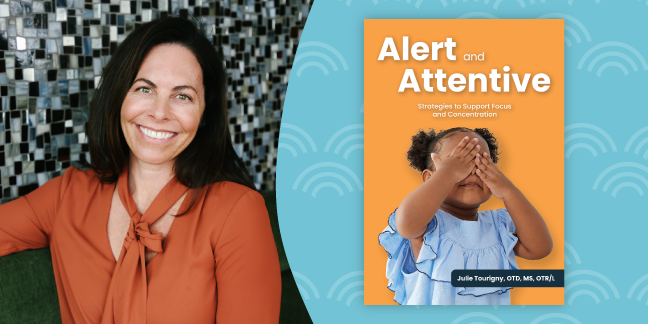Changing Our Approach to Young Children's Behavior
August 13th, 2025 | 3 min. read

When I began practicing as a pediatric occupational therapist in 1998, occupational therapy in the school setting primarily provided support for fine motor skills and visual motor development. Difficulty with pencil grasping or handwriting was the most common reason that teachers and caregivers referred children to me. As a result, I filled my toolbox with activities that targeted letter formation, hand strength, and coordination.
As the years went by, I started to notice a shift. More of the children I worked with weren’t just struggling to hold a pencil—they were struggling to hold themselves together.
Teachers would tell me things like:
“He falls apart if the schedule changes.”
“She cries over the smallest mistake.”
“He can’t sit still long enough to even begin his work.”
“She shuts down when something is too hard.”
These weren’t just behavioral concerns. They were signs of children struggling with self-regulation, an important skill that allows us to manage big feelings, follow directions, persist through challenges, and navigate social situations.
The First Book: Calm and in Control
This realization inspired me to write my first book, Calm and in Control. I wanted to give teachers, therapists, and parents practical, evidence-based tools to help children learn how to manage their emotions and responses. Self-regulation is something we learn, not something we do naturally. It is supported, modeled, and taught like any other developmental skill.
In Calm and in Control, I break down the core components of self-regulation and offer strategies that are simple enough to use in the classroom or at home but powerful enough to make a real difference. The feedback I received from that book was overwhelming: educators told me they finally had language and tools to help children before behavior escalated. Parents shared stories of how their children were able to identify feelings, use calming strategies, and recover from big emotions more easily.
While I was grateful that Calm and in Control made such a positive impact, I realized as I continued to work with children that self-regulation is just one piece of the puzzle. And so, the idea to write a series was born.
Expanding the Conversation: Organized and Engaged
I continued to encounter children who were bright and capable but had difficulty organizing their materials, following multi-step directions, or shifting from one task to another. I quickly realized that these children weren’t lacking motivation; they were lacking the executive function skills that make learning and daily life manageable. Executive function includes skills like planning, working memory, attentional flexibility, and inhibitory control. These are the mental skills that allow us to stay organized, control impulses, and get things done. As with self-regulation, these skills can and should be taught, not assumed.
I wrote Organized and Engaged to simplify executive function for teachers and caregivers and provide a clear, accessible framework for supporting its development in young children. This book offers hands-on activities, visual tools, and routines that help children become more independent, flexible, and successful in their learning activities, play, and social skills.
After addressing executive function, I decided to move onto another topic that is essential to children’s well-being and success: attention.
Concluding the Conversation: Alert and Attentive
Attention is a foundational skill for learning, playing, and engaging with others. Attention is not just about “sitting still” or “listening quietly.” It’s about the brain’s ability to focus, filter out distractions, and shift between tasks when needed.
Children who struggle with attention are often labeled as lazy, defiant, or disinterested. Many of these children are doing the best they can with the skills they have. That’s why I wrote Alert and Attentive: to provide strategies that move beyond asking children to “pay attention” repeatedly and help them actually learn how to focus.
Drawing on principles of sensory processing, emotional regulation, and development, Alert and Attentive offers strategies, environmental supports, and ideas that will help children better sustain their attention as they learn, play, and socialize.
Putting It All Together
The central idea of all three books is one that has also guided my work for the past two decades: self-regulation, executive function, and attention are skills, not traits. When we shift our mindset to view these abilities in the same way we view other developmental skills such as walking and talking, it changes how we respond to children. Instead of asking “Why won’t he listen?” we begin to ask “What support does he need to build that skill?” Instead of labeling a child as “difficult,” we start to see them as a learner who needs guidance and practice.
This shift is especially powerful in early learning environments because these are the critical years when children lay the foundation for how they learn, relate, and manage challenges. The earlier we support these skills, the better prepared children will be—not just for school, but for life.
After more than 25 years of working directly with children, families, and educators, I’ve come to believe that we don’t need to wait until a child is struggling to start building these essential skills. Prevention and proactive support are possible, and they’re more effective than trying to correct problems after the fact. Through Calm and in Control, Organized and Engaged, and Alert and Attentive, my hope is to empower those who care for young children with playful, practical, and developmentally appropriate tools that they can start using today.